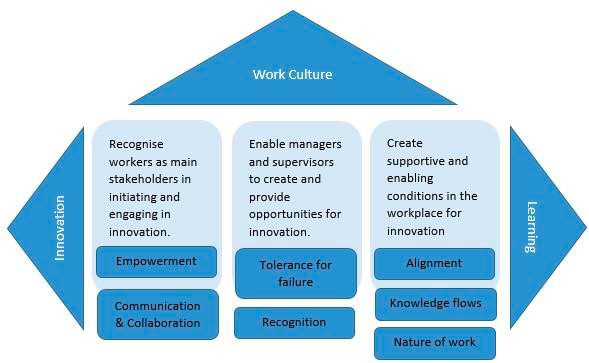An interesting research note from Singapore’s Institute of Adult Learning (IAL) looks at 7 enablers of an innovative learning culture. While it might be focused on enterprises, it could equally be applied to building an innovative learning culture in VET providers through fostering workplace learning and having an appropriate organisational culture.
It’s also about nudging people and organisations into a culture of self-improvement and adaptability to change “through incentives, financial support, technology adaptation, human resource development, etc.”
There are a lot of interesting, even exciting, things going on in Singapore. As they note: “The Singapore government has played a major role in directing both public and private enterprise energies towards the twin issues of innovation and learning through education, workforce development and enterprise support.”
The ‘essence’ of an innovative provider culture
An innovative learning culture enables people to constantly improve, develop and adapt and “unfolds through a sequence of (learning) activities, such as finding and defining problems, resolving contradictions and seeking solutions, which lead to new forms of work activities.” We have talked about such an approach before in VDC News when looking at innovating by ‘niggling,’ ‘jiggling’ and then ‘squidding’.
In their research note IAL suggests there are 7 enablers that are interconnected and interdependent. They are concerned with trust and commitment, mutual agreement and collaboration, which – in turn – create the ‘organisational affordances’ for an innovative learning culture. A while ago, 2004 in fact, UQ’s Professor Victor Callan wrote a paper for NCVER entitled “Building innovative vocational education and training organisations.” He pointed out that innovative organisations create learning cultures, have failure-tolerant leaders, identify their innovators, reward people, use partnerships and promote teamwork. So, it might be worth a read too.
The enablers
They are presented in the figure from the IAL’s research note below. The 7 enablers are set out under 3 themes:
- Recognising workers
- Enabling managers and supervisors, and
- Creating supportive and enabling conditions.
Each of the 7 are then highlighted in bold and described briefly in the text below. The full paper is worth a read, though.

Empowerment refers to the discretion, trust and resources given to staff “to make decisions on how best to do their work.” Communication and collaboration are both fundamental to the process and involve “passing and sharing information and understanding between people and organisations.” It is also a “process of negotiation and compromise.”
Tolerance of failure is also important and allows staff or organisations to “deal with failure and risk.” It’s also important to learn from one’s failures. Recognition is also an important component to foster innovative practice as it acknowledges and rewards the staffs’ “effort in innovation and learning so that they feel valued and appreciated.”
Finally, there are the 3 other enabling processes. The first is alignment, which is concerned that “the way in which an organisation operates is reflective of its strategy, and the extent to which workers agree [with], understand and play a part in this strategy.” This is coupled with knowledge flow (that is, “the exchange and production of knowledge, which enhance learning and performance for organisations and staff.”) and the nature of work, which is concerned with having the sort of workplace environment that enables or constrains an innovative learning culture.
In conclusion…
The paper points out that:
“Empowering workers goes hand in hand with workplace affordances that support learning and innovation. All of these need to be structured by trust and commitment, mutual agreement and collaboration.”
Finally, empowering staff goes hand in hand with workplace practices and a culture that supports learning and innovation by engaging and inspiring staff “to think differently (or think big), do different things, [or] try new ways of doing things.” It also needs “trust and commitment, mutual agreement and collaboration.”








